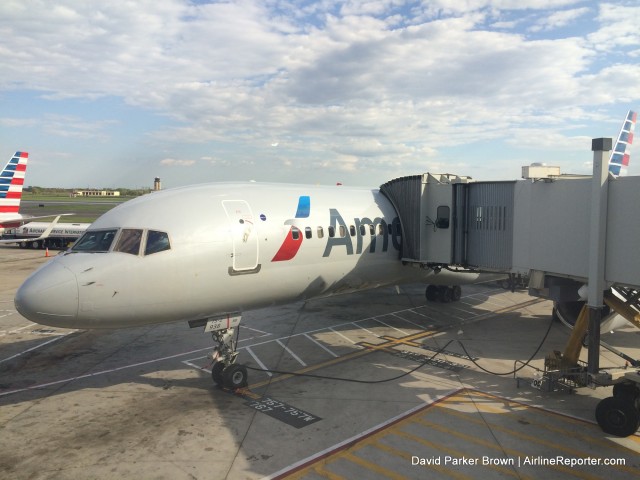
Our Boeing 757 from Philly to San Juan
I do not have kids. I am an only child. I have a very small family where I haven’t really been around a lot of kids. By no means do I dislike strangers’ kids, but I am also not one to go out of my way to interact with them. But I do have to say that I love my friend’s kids. But how much?
I was recently invited to head down to San Juan, Puerto Rico from Seattle (with a short layover in Philly) with one of my best friends and his family: his amazing wife, three kids (ranging from 4-11), and his mother. Most of my traveling is done solo or in a small group of adults. How would flying with kids go?
I have seen others do it, I have even read a few stories on it, but I figured that the hands-on experience would be a bit different. I ended up with quite a few (good and bad) surprises.

Stunning livery – airberlin Saab 2000 operated by Darwin Airline/Etihad Regional – Photo: Jacob Pfleger | AirlineReporter
Recently, airberlin commenced flights between Prague and Berlin-Tegel, and I was fortunate enough to be on-board the inaugural service.
The flights are operated by Darwin Airline/Etihad Regional using a 50-seat Saab 2000 aircraft. It was a new type for me having only previously flown on the Saab 340. The Saab 2000 is one of the fastest turboprop aircraft in commercial service, with a maximum cruising speed of 413mph.
I was curious to see what the Etihad Regional product would be like, and if it would live up to the Etihad mainline economy class experience.
airberlin has scheduled three daily return flights on the route. If we look at the route from a P2P (point-to-point) perspective, three flights is a lot, given the numerous train and bus connections linking Berlin and Prague, in about five hours. The justification from airberlin for the three flights per day is that Prague-Berlin will act primarily as a feeder service for their mainline European and long-haul international networks. All the flights are time strategically to connect, in particular with long-haul flights New York and Moscow.
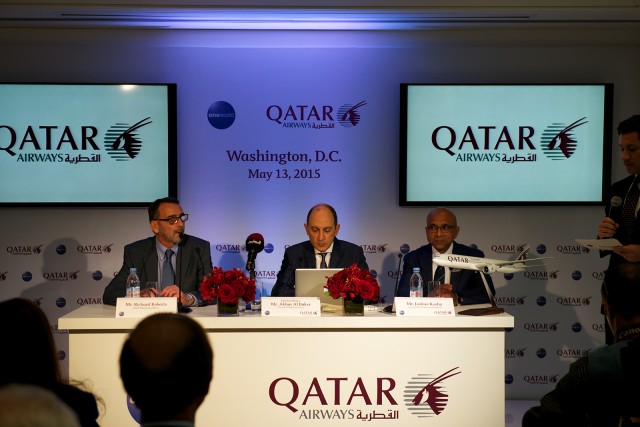
His Excellency Akbar Al Baker flanked by two senior Qatar Airways executives at his DC press conference – Photo: Bernie Leighton | AirlineReporter
There is a ridiculous war of words over whether or not American customers deserve to have choice. I’ve been over the open skies debate before, many times. Both here and other places. You know where I stand; I support the middle eastern carriers. I am not here to talk about the whole debate today, but am here to talk about only one facet of it – Qatar Airways.
Qatar Airways has been the target of a certain American that neither myself nor H.E. Akbar Al Baker would like to name. I flew to Washington D.C. to watch Qatar’s head shoot down these allegations of questionable legality in person. Furthermore, it’s always a pleasure to see my favorite aviation personality.
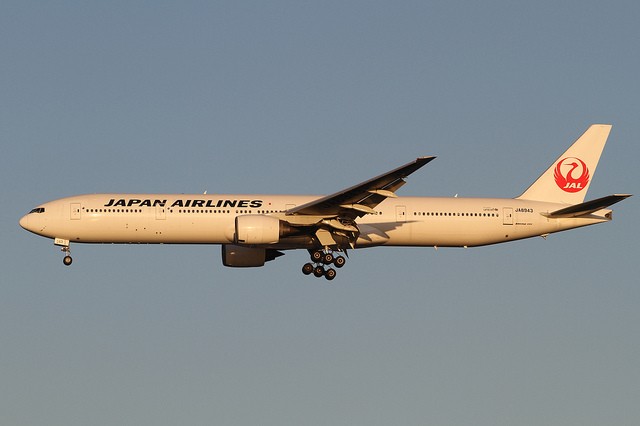
JAL Boeing 777-300ER landing in Haneda – Photo: Kentaro IEMOTO | Flickr CC
Recently, I visited Japan for the first time, and thanks to codesharing, my American Airlines ticket was for a flight operated by Japan Airlines. It’s always fun to try a new airline, and even better, I got an opportunity to fly in their Premium Economy cabin!

There’s my seat, 18A – Photo: Lauren Darnielle
Prior to boarding, I visited the Sakura Lounge at SFO, which is available to those traveling in Premium Economy – a nice benefit. It was pretty small, plain, and crowded, but I did appreciate the chance to have a little something before my flight. It was just after midnight, so at that hour, they had a selection of Japanese and American snacks along with mini sandwiches and a variety of alcoholic and non-alcoholic beverages. I had a glass of orange juice, a mini egg salad sandwich, and some rice crackers, which were all tasty, and then headed back to the gate.
The lounge was a bit of a walk from the gate, up an elevator, and down a hallway, but with my very short layover from Seattle, I didn’t want to hang around too long and miss my pre-arranged early boarding.
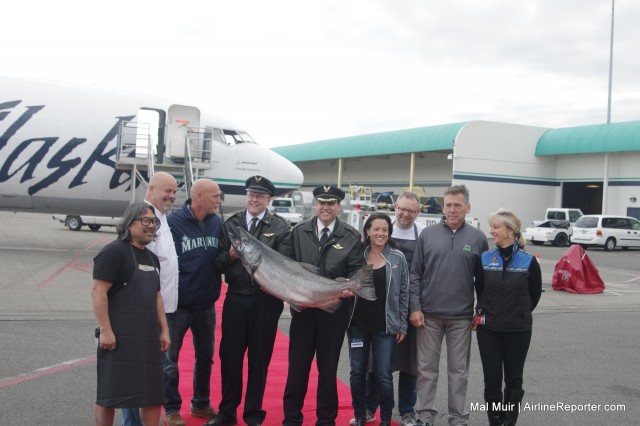
Welcoming a 53lb Copper River salmon to Seattle
In what town do people get up before 4:00am to greet some fish? In the land of the flying fish, of course!
This was the sixth year in a row that I woke up earlier than I probably should to greet my breakfast, which was flying in on an Alaska Airlines Boeing 737-400 Combi. Why? Well, it is a special (aka delicious) kind of breakfast; some Copper River salmon.
Also, I enjoy the fun event that Alaska Airlines puts on each year to celebrate the official start to the salmon season.
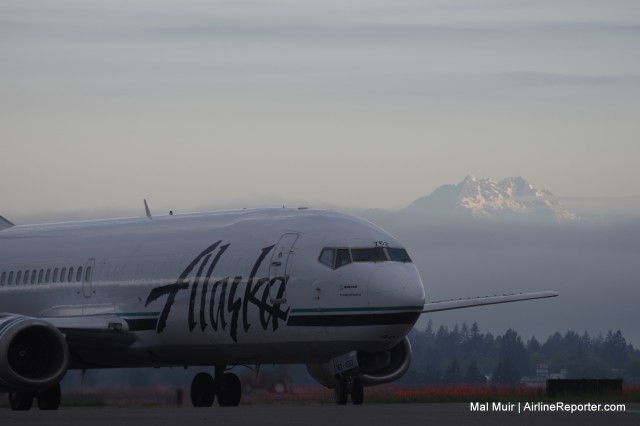
The Alaska Airlines Boeing 737-400 Combi (reg N762AS) arrives to SEA
Why are these salmon different? Well, they like to travel — about 300 miles from the ocean to their spawning grounds and that type of journey requires lots of energy (aka fat). That fat gives the fish its special flavor for which many people are willing to pay a premium.






